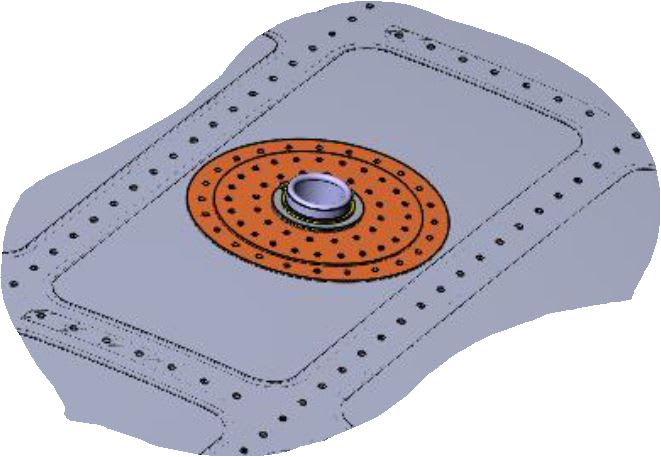RB... FYI...
Reverse driving countersunk rivets... driving the protruding head rivet from the interior of the structure... bucking the tail into the exterior countersink... then milling the bucked-into-csk-tail flush to skin... is loosely called the 'NACA riveting method'.
NOTEs.
Fatigue testing data implies significant improvement in fatigue-life of the csk skin... because the bucking process swells the tail into the hole/csk more tightly, cold-working that interface much better than conventional rivet installations [driving the flush-head in the csk... and bucking the tail on the opp side into a conventional 'button'].
WHOLE bunch of ‘other’ picky reasons that I have NOT mentioned are why the NACA Method makes a better hand-riveted installation than head-into csk method... but usually 'production slow-down and co$t' for rivet shaving’ usually trumps this practice.
In general, conventional riveting using automated tools/monitoring and 'precision tolerance solid flush-rivets’ is so accurate/consistent/fast that the NACA Method has relatively low value... except for ‘corner-of-the-envelope’ stress/fatigue applications.
The 'NACA method' is a lot more difficult with high strength low-ductility alloys [D, J, K, E, T].
The rivet milling-to-flush process requires a 'precise-touch and good quality cutter tooling' to avoid skin scoring... and mandates chromate-conversion-coating brush-over of the milled-bare aluminum rivets. LOTS of ways [either method] to 'mess-it-up' with poor workmanship.
I understand that an aircraft manufacturer is now fastening pressurized-body-skin lap-seams [with multi-rows of rivets] using BOTH methods... outer-rows using the NACA Method... inner row(s) using conventional method.
Regards, Wil Taylor
o Trust - But Verify!
o We believe to be true what we prefer to be true. [Unknown]
o For those who believe, no proof is required; for those who cannot believe, no proof is possible. [variation,Stuart Chase]
o Unfortunately, in science what You 'believe' is irrelevant. ["Orion", Homebuiltairplanes.com forum]

